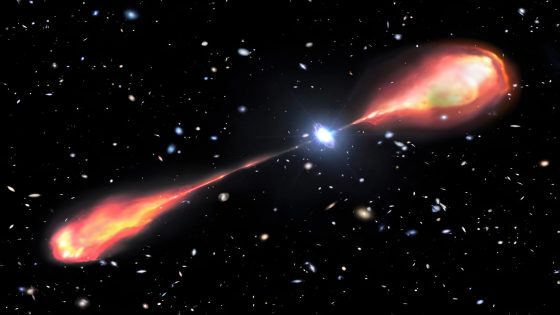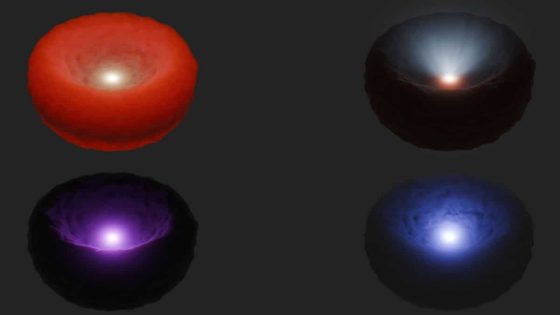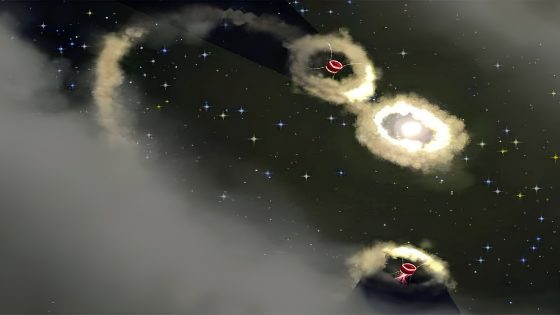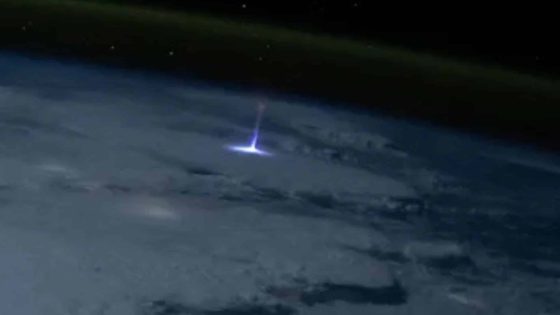A groundbreaking discovery has unveiled the largest radio jet ever seen, offering a rare glimpse into the early universe. On February 7, 2025, astronomers announced the detection of a colossal jet extending over 200,000 light-years from a distant quasar named J1601+3102. But what does this mean for our understanding of galaxy formation and the role of supermassive black holes?
- Supermassive black holes exist in most galaxies.
- J1601+3102 has the largest early radio jet.
- Detection was made using the LOFAR telescope.
- Asymmetrical jets suggest environmental influences.
- Future telescopes will enhance cosmic observations.
- Study reveals insights into galaxy formation.
Largest Radio Jet Ever Detected Offers Insights into Early Cosmic Events
This remarkable discovery raises questions about the early universe. How did supermassive black holes shape the galaxies we see today? The radio jet from J1601+3102 provides crucial insights into the dynamics of galaxy formation during a time when the universe was just 1.2 billion years old.
Understanding the Origins and Impact of Cosmic Jets
This massive radio jet challenges long-held beliefs about black hole dynamics. Researchers found that the black hole powering J1601+3102 is only 450 million solar masses, much smaller than typical black holes associated with such large jets. This suggests that powerful jets can form even from less massive black holes.
- The jet extends over 200,000 light-years, twice the size of the Milky Way.
- It was detected using the Low Frequency Array (LOFAR) telescope network.
- The quasar is located nearly 12 billion light-years away, providing a view into the young universe.
- Future observations with advanced telescopes like the James Webb Space Telescope may reveal more about such jets.
Revealing the Nature of Early Quasar Activity
The discovery of J1601+3102’s jet highlights the importance of studying early quasar activity. These jets can influence star formation by injecting energy into their surroundings, potentially regulating the gas available for new stars. Understanding this process is vital for piecing together how galaxies evolved in the early universe.
Challenges in Detecting Early Cosmic Jets
Detecting radio jets from the early universe has been challenging due to interference from cosmic microwave background radiation. This discovery showcases the capabilities of LOFAR and emphasizes the need for multi-wavelength observations to uncover hidden cosmic phenomena. The unique characteristics of J1601+3102 allowed astronomers to overcome these challenges, revealing a spectacular cosmic structure.

































